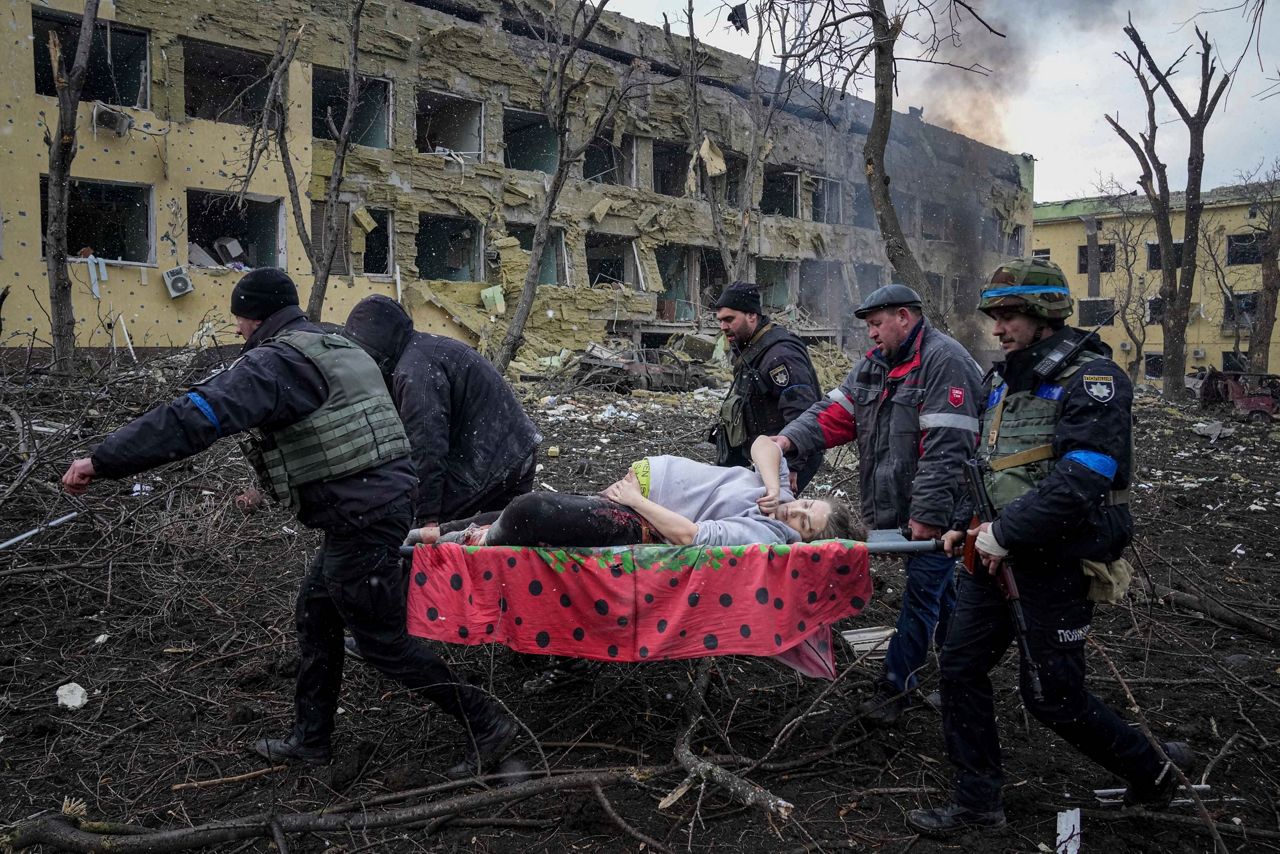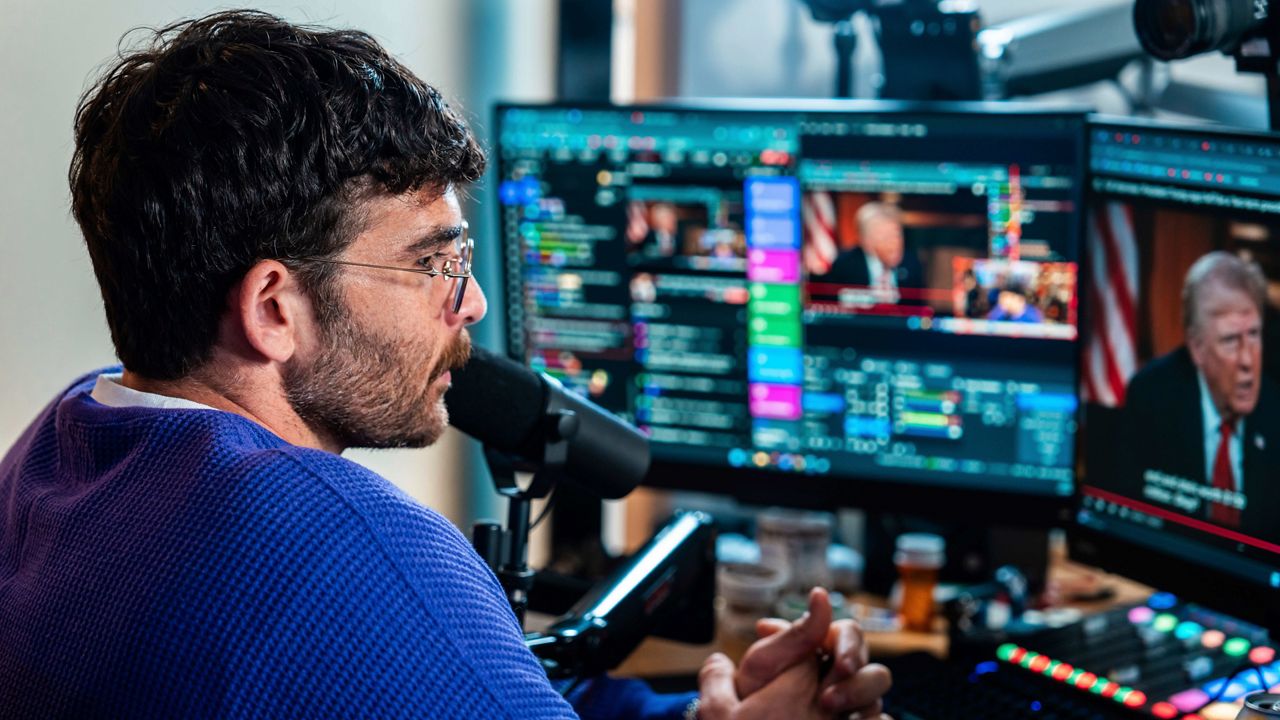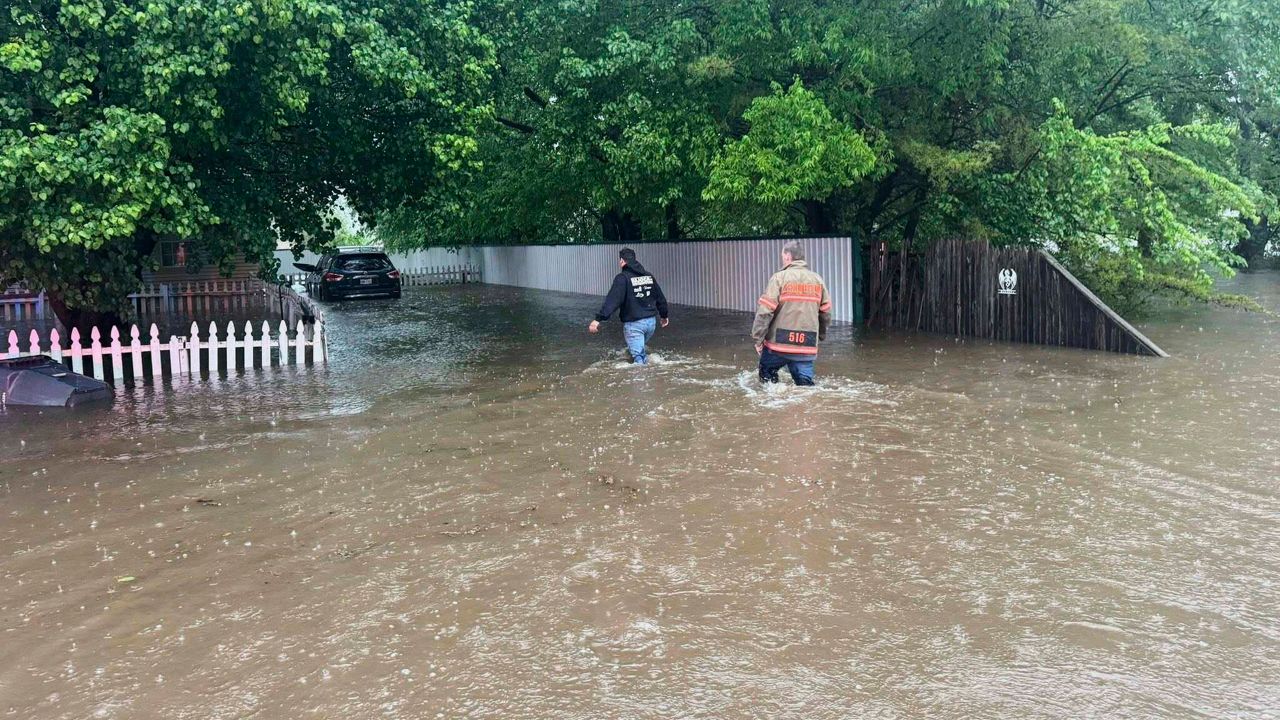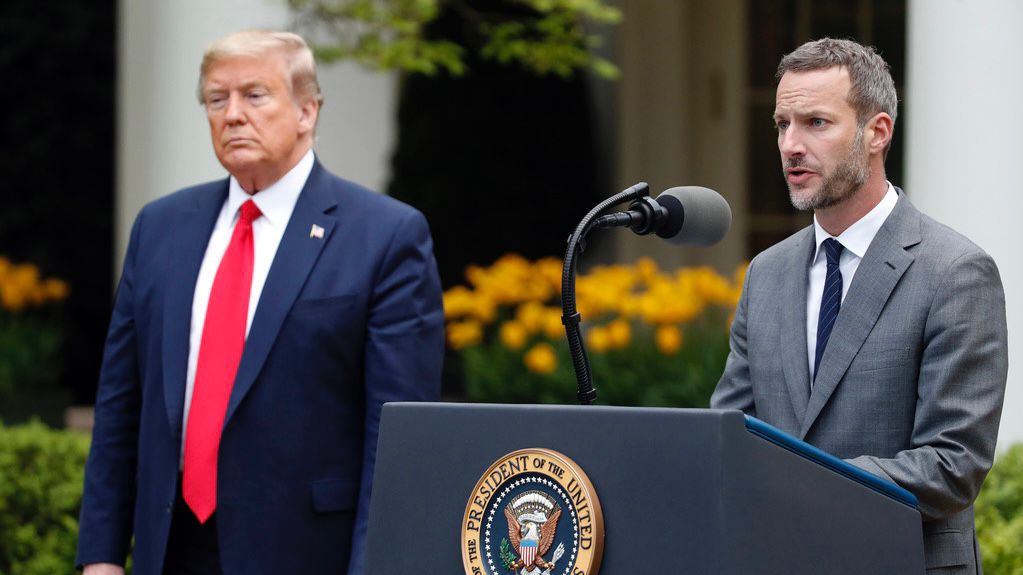A little less than a century ago, news about World War II was shown in movie theaters. During the Vietnam War, Americans could tune in from their living rooms.
Today, the world is learning about the war in Ukraine in real-time, often from their smartphones.
“This war, in terms of communication, has been different from the very beginning,” Kristine Berzina, head of the geopolitics team at the German Marshall Fund Alliance, told Spectrum News.
Before any shots were fired, the Biden White House took a rare step of revealing sensitive U.S. intelligence about Russia’s intentions – that President Vladimir Putin intended to send a large amount of forces to invade Ukraine, that he would send troops to topple Kyiv and that the capital city would quickly crumble under Russian assault.
The detailed information surprised some, as it was largely accurate, save for a key point: Russia has so far failed to gain control of Kyiv.
“What the West has chosen to do in this war is to be open in an unprecedented way in order to deter Russia's behavior, but also to show the world that Russia has had time to take an off ramp, to change its mind,” said Berzina.
Russia didn’t change its mind – and soon the world saw what this war looked like.
The press has largely been allowed to remain in Ukraine in the seven weeks since Russia first invaded, and images emerging from the conflict quickly turned horrific. One photo showing a pregnant woman being carried out of a decimated maternity hospital in Mariupol circulated the globe, causing international outrage.
The woman and her baby later died.

Photos also circulated widely of another woman, Mariana Vishegirskaya, who was forced to flee the hospital after an airstrike hit it; a scene of her descending down a flight of rubble-strewn stairs in polka dot pajamas, while pregnant, with her face bloodied, was photographed by The Associated Press and seen around the world.
The AP was also on hand to capture another photo of Vishegirskaya days later – this time after giving birth to her daughter, Veronika.

Satellite imagery has also helped paint a picture for the outside world of what is happening inside Ukraine.
In one instance, satellite images showed Ukrainians spelling out the word children outside a theater sheltering civilians. Russia bombed it anyway.
Last week, videos and images emerged from Bucha appearing to show civilians, some with their hands bound, shot at close-range. Investigators have since arrived in the region to examine locations of mass graves in an effort to document potential war crimes.
So shocking were the photos that the U.S. and its allies issued another round of sanctions against some of Putin’s inner circle, citing the atrocities in Bucha as reason for the crackdown.
Russian officials have repeatedly maintained that many of the photos – such as those from Bucha – were staged. Analyses of satellite imagery from Bucha contradicted Russia’s claims that the bodies were staged after its troops left the region.
The Ukrainian government is banking on Western journalists to sway world opinion, experts say. It’s part of a media strategy that gives access to fighter pilots, to Ukrainian officials frequently posting on social media, to their soldiers on TikTok.
In the middle of it all is Ukraine’s media-savvy, comedian-turned-president – filming selfie-style videos from his besieged capital – that are going viral.
“The images of Bucha and Mariupol have demonstrated real Russia’s [sic] intentions to the whole world. [...] It must be done now,” President Volodymyr Zelenskyy said in a recent video shared from Kyiv. He asked the United States and other allies to send additional shipments of heavy artillery, armed vehicles, air defense systems and combat aircraft; the U.S. ultimately heeded many of Zelenskyy’s requests.
Says Berzina: “The humanity of the leaders, the accessibility of them giving social media their daily addresses and then the heart wrenching images of what the attack really looks like for regular Ukrainians – those have been defining in this conflict.”
Russians are seeing an alternate reality. President Vladimir Putin has all but banned independent journalism. Official media outlets echo his bogus claims Russian soldiers are purging Nazis from Ukraine.
“Russian state TV channels are streaming news or sort of political content that is highly – I wouldn't even say, biased, because that's not enough to to describe what it is,” says Natalia Krapiva, Tech-Legal Counsel at the digital freedom group Access Now.
NewsGuard, a site that tracks and compiles purveyors of misinformation, has identified at least 181 domains promoting false claims about the conflict between Russia and Ukraine. While the three most influential sites are all affiliated with the Russian government, NewsGuard noted a plethora of websites “that are not official propaganda arms of the Russian government [...] also promote false claims supporting the government of Vladimir Putin.”
And even after his military was forced to retreat, Russians aren’t blaming Putin, at least in any big way.
The lessons? In a wired world, authoritarianism still can work.
“Technology is not a silver bullet,” Krapiva says. “It cannot solve a lot of the underlying problems – political, military, social, psychological, problems, that are underlying these issues.”
While the U.S. may not have state-controlled media the way Russia does, misinformation still spreads on television – but more particularly online.
According to a 2021 report by Pew Research, nearly 86% of Americans say they “often” or “sometimes” get news updates from their tablet, phone or other smart devices, compared to 68% who “often” or “sometimes” get news from live television. Americans ages 18 to 29 are far and away the most likely to consume the majority of their news from social media.
Lawmakers are particularly concerned about the rise in misinformation on social media platforms like Facebook. Some of the concern is, in fact, linked to Russia, which in 2016 used Facebook ads to sway the presidential election in favor of Donald Trump. A Pew Research study of 376 million Facebook users from the same year found users tend to “seek information that aligns with their views.”
In late 2021, Facebook whistleblower Frances Haugen said in a Congressional hearing: “I believe that Facebook’s products harm children, stoke division and weaken our democracy.”
Trust in American institutions, including Congress and the courts, is low. There is concern about our own democracy, that it is fragile. That its future is not assured.
Berzina, who studies democracy, says the U.S. should take key lessons from observing the war in Ukraine.
“Ukraine is really showing the U.S. why democracy matters,” she says. “Why open communication matters, why having press and having citizens on the ground, being able to show each other what's going on matters.”









